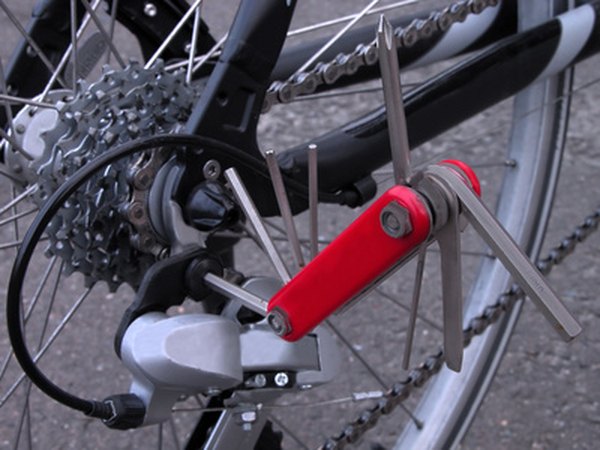How to Choose Proper Gear Ratios to Optimize Speed and Torque UPDATED
How to Choose Proper Gear Ratios to Optimize Speed and Torque
The style that gears interact with each other is important to know for anyone planning to make the nigh of them. Most modernistic cars accept gear ratios that were calculated with computers, merely bikes and mechanical home projects do non. If you're mystified past gear ratios, it volition help to know what a gear ratio is, and how it affects other parts of your mechanical device.
Gear Ratio
Where there are a number of gears meshing together, the number of teeth on them will grade an important ratio: the gear ratio. When several gears are meshing together, they form what'due south called a gear chain. The ratio is only calculated from the commencement gear, the driving gear which is attached to the power source, and the last gear in the concatenation. If you count up the number of teeth on gear one, and on gear X (the last one) and set up them in a ratio (1:X), this is the gear ratio. If the number can be reduced, you should reduce information technology, for example a ratio of 100 teeth:40 teeth reduces to 5:2.
Speed and Ratio
The gear ratio is necessary for computing the speed a given gear chain will produce. When you accept that information, you take one-half of the data needed to calculate the speed. The equation is Speed(Gear 1) * Teeth (Gear 1) = Speed (Gear 10) * Teeth (Gear X). Then, if you have the speed the motor is putting into the gears, you can very hands calculate the speed of gear X.
Pulleys

••• pinions and folding tool epitome by Radu Razvan from Fotolia.com
On a bike, y'all have a slightly different arrangement: instead of a pair of gears meshing straight, they're fastened past a pulley chain, but the gear ratio even so applies. On a mountain bike, for example, you accept a set of concentric gears attached to the pedals, and more gears fastened to the drive bike. The ratio of teeth on the wheel gear to the teeth on the pedal gear will still form a ratio--and if you pedal at a set speed on the bike, changing that gear ratio will change how fast you go.
Idler Gears

••• mechanical gears and cogs image by patrimonio designs from Fotolia.com
In a gear concatenation, when there are a number of gears in the centre, something fairly interesting happens to the middle gears. You may have noticed that in the previous calculations, the merely gears that are important are the get-go and last. This is because gears in betwixt don't impact the speed--they'll go equally fast or slow every bit they need to. What they will change, however, is the direction: if at that place's an odd number of gears, the first and terminal will turn in the same management.
Benefits
The benefits of knowing the gear ratio is that you can use that to your mechanical reward. There is a trade-off betwixt speed and torque, which is rotational ability. When the gear ratio is ane:one, the amount of torque is the same, and the speed is the same. Withal, as soon equally you lot increase the gear ratio (1:4, for example), you're going to cut the corporeality of torque but significantly increase the corporeality of speed. If you reversed the ratio (say, 4:1), yous would cutting the speed but heave the torque.
DOWNLOAD HERE
How to Choose Proper Gear Ratios to Optimize Speed and Torque UPDATED
Posted by: gladysthemot.blogspot.com

Comments
Post a Comment